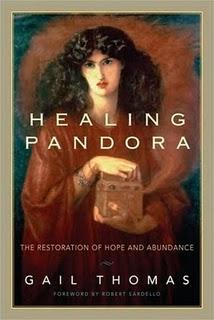Healing Pandora: The Restoration of Hope and Abundance

The mythic Pandora has long been misunderstood as one who brought evil into the world. She was thought to be the first mortal woman created and sent to Earth by the gods. Her infamous box, once opened, leads to the escape of diseases and other ills, resulting in a lasting curse upon humankind.
But this is not Pandora’s original story; in fact, the modern retelling of this myth is vastly different from Pandora’s true nature. In Healing Pandora, author Gail Thomas explores the origins of the Pandora myth, how it evolved into the tale we accept today, and Pandora’s influence on our culture.
Thomas asserts that long before Pandora’s myth became twisted, she inhabited the role of a goddess. Pandora was not just any goddess. She was the Earth Mother and maker of “all things, all gods, and all mortals.” But like many other female figures (historical or mythical), Pandora’s role as life giver transformed into one who bestows misfortune upon the world, and men in particular.
The first half of Healing Pandora takes a thorough look at the goddess and the vessel she carries, while in the second half, Thomas focuses on how people can apply Pandora’s lessons to modern culture. Thomas describes Pandora as “an archetypal image of culture, an image no longer in the consciousness of our world today.” She invites the reader to consider Western culture as a living entity and describe its appearance. The author bets the image would be one of “competition and scarcity.” By viewing culture through the Pandora myth, however, Thomas states that we will find “a bountiful feminine figure with outstretched arms and hands, waiting to provide everything we need.” The latter outlook seems most assuredly a rarity for Westerners.
Some solutions Thomas offers for transforming culture include women and men embracing their feminine side and also to become true stewards of the earth who recognize that spirit exists in all matter. She also suggests considering how different the world would appear to each of us if we imagined it as a bountiful place instead of one that is always deficient in some way or another.
Of course with a book titled Healing Pandora one would expect the author to spend some time analyzing myth. Thomas does this and takes liberty by discussing Pandora and many other mythic figures in great detail, so much that it’s difficult to keep track of the book’s main purpose. On the other hand, she does raise many valuable and thought-provoking insights toward culture today that are worth contemplating, and Thomas provides a much-needed background of Pandora before her myth became corrupted.